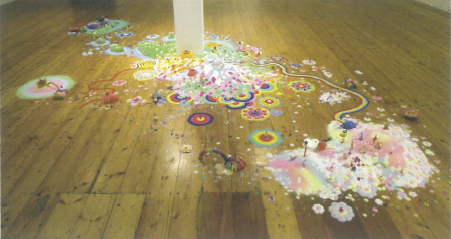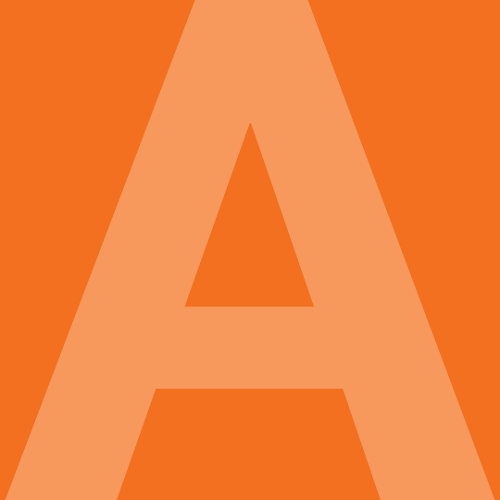
The artists in Terra Incognita are interested in the conceptual and speculative nature of map-making. They recognise the human urge to map the world we live in and create some sort of path of connections through and around it. Each artist uses mapping as a creative language to organise and record the personal and psychological spaces we inhabit as well as uncharted imaginary and fictive realms. They follow in a rich tradition of artists' map-making, from Robert Smithson's maps of fictive sites and non-sites to the more recent sonic timelines by Dave Muller.
Curated by Gertrude Contemporary Art Spaces' Jacqueline Doughty, this is a carefully considered and visually captivating exhibition that includes work by Australian and international artists who approach map-making in related ways. The artist work labour-intensively, with close attention to detail and with humble materials such as thread, liquid paper, tape, dried paint and coloured sand. The works are self-contained and invite an intimate viewing.
Most spectacular is Nicole Andrijevic's floor-based topographical landscape made from mounds of brightly coloured sand decorated with origami, sequins and fairy lights. Like a scene from Charlie and the Chocolate Factory, which is part inspiration for this work, psychedelic coloured mountains and valleys look good enough to eat. Andrijevic's map is a mesmerising rendering of the saccharine surface of consumer culture designed to entice us and activate our desires.
Simon Yates' rough-hewn cardboard, wood, paint and tape miniature diorama is the aesthetic antithesis of Andrijevic's sparkling map. His machines and inventions illustrate abstract concepts and theoretical problems in an effort to describe these things objectively. Yates' work is driven by the map-makers strong desire to rationalise things, but it is the inability to fully resolve and explain things that is revealed in this instance. Although quite dense in this miniature version, Yates' work is a curious and genuinely open-ended piece.
Moving away from the search for logic and clarity, Jessica Rankin embroiders text, symbols and images on to the sheerest organdy to make 'brain maps'. Fragments from conversations, remembered texts, astronomical maps and architectural blueprints traverse, spiral and pool across the organdy, forming patterns reminiscent of aerial views of landscapes. Rankin's works have an ethereal quality about them and are delicate records of fleeting thought passages that show the continuum of past and present in our minds.
Maps and charts are often used to define who we are in relation to each other. Christian Thompson questions the authority of such map-making with his reproduction of a photograph from a found book 'How to make Aboriginal Arts and Crafts'. On the blown-up photograph of children looking at a rock art 'map', Thompson superimposes a tracing of one of his family photographs along with symbols that have specific relevance to his Indigenous heritage. In this action, he questions the non-indigenous interpretation and co-option of Indigenous culture and at the same time he places himself within the context of post-contact Aboriginal experience.
Bridget O'Brien also puts forward an alternative relation to the land, in this instance, inspired by the Korean practice of geomancy that ascribes psychological significance to geographical features. O'Brien's large-scale wall painting is composed of dried paint peelings that are stuck to the wall in a configuration made to resemble a series of mountains. In these works there is a tension maintained between gestural and analytical processes, and between physical forms and their intangible resonances.
British artist Simon Evans appears to be the most obsessive map-maker of all the artists in this exhibition. Evans makes lists, graphs, charts and plans that lay out and record aspects of his daily life, and the social and art landscape that surrounds him. These works are attempts to create a semblance of order out of the complexity and confusion of life. His works are patched together from the most basic materials including biro on torn pieces of paper, layers of liquid paper and Scotch tape yet they are works of epic proportions. Evans' difficult balancing act between entropy, humour, anxiety and sincerity is a particularly memorable inclusion in this exhibition.












